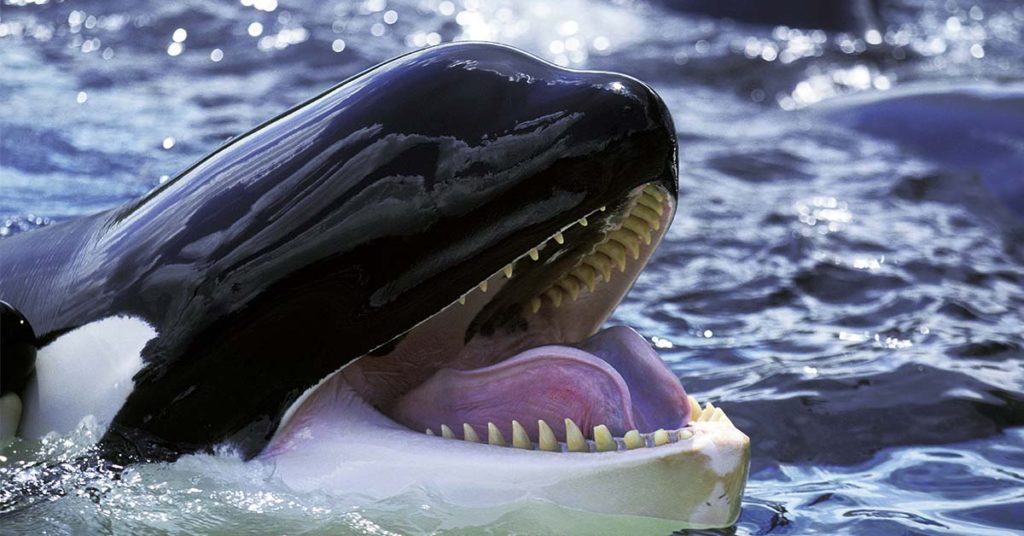SeaWorld, a renowned American theme park celebrated for its marine animal performances, has gained notoriety for both its captivating shows and controversies involving orca attacks. The 2013 documentary, Blackfish, generated adverse publicity, shedding light on the park's treatment of animals. Consequently, in 2016, SeaWorld announced the discontinuation of its in-park orca breeding program. This move aims to put an end to the longstanding issue of captive orcas attacking their trainers, a troubling trend persisting since the 1970s. A notable incident occurred in 1987 when an orca nearly drowned 26-year-old trainer Joanne Webber.
"I think my neck is broken!"
In a rehearsal, an orca vaulted over Webber, impacting her with the entire weight of 6,000 pounds, resulting in a fractured neck and submerging her to the bottom of a 40-foot-deep pool, as stated in her legal complaint. The involved orca, Kandu V, had gained notoriety for displaying aggressive and unpredictable conduct. Amidst the ordeal, Webber vocalized, "I think my neck is broken," while making efforts to swim out of the pool.
Webber filed a lawsuit against SeaWorld, alleging that her injuries resulted from negligence and fraud. She claimed that the company was aware that the killer whales were "ferocious and dangerous," with a high likelihood of attacking and injuring humans. Despite this knowledge, SeaWorld assured her that the whales were "safe" and "gentle." Furthermore, the lawsuit asserted that park personnel delayed Webber's treatment by insisting she change out of her wetsuit to prevent potential damage by medical staff at the hospital. Due to her painful injuries, the suit claimed she was forcibly "stripped of (the) wetsuit by SeaWorld personnel" and then instructed to dress and walk 200 yards to the ambulance.
Webber's injuries included fractures of the first cervical vertebra, contusions of the skull and scalp, and bruises on her left arm and shoulder. Even a year later, two cracks in her neck vertebra had not properly healed, leading to a loss of motion in her neck. The lawsuit was settled out of court, but her story resurfaced amidst SeaWorld's latest controversy.
SeaWorld Orca Attacks Its Tankmate
Recorded on video, an incident unfolded at SeaWorld San Diego where one orca attacked another. The footage depicts a killer whale beaching itself on a ledge while the other orca assaults it from below. Witnesses observed blood in the water and noted visible wounds on the targeted orca. PETA, an animal rights group, shared the clip, prompting SeaWorld to counter by labeling the video as "misleading and mischaracterized." The company contended that such behavior is typical among orcas and asserted that neither whale sustained any serious injuries.
"Naomi Rose, a marine mammal scientist at the Animal Welfare Institute, notes that the orca beached itself since there was no other way to escape the attacks. In the wild, it could've just swam away. But while Rose doesn't know why the orca attacked, she affirmed it was "most certainly" an act of aggression and not normal behavior. "…I will say that this kind of aggression in SeaWorld tanks is actually more common than SeaWorld lets on or tourist cameras capture."
The most well-known incident of aggressive behavior by an orca revolves around trainer Dawn Brancheau. On February 24, 2010, she lost her life when Tilikum, an orca, seized her hair and dragged her beneath the water, leading to her drowning and sustaining traumatic injuries. In the subsequent legal proceedings against SeaWorld, attorneys representing the federal Occupational Safety and Health Administration highlighted that Tilikum had been involved in another trainer's death in 1991 at a park in British Columbia.
Blackfish vs SeaWorld
Tilikum's narrative took center stage in the 2013 documentary Blackfish. It commenced with Tilikum's separation from his mother at the age of two, followed by his residence in a tank with two larger females who routinely attacked him. After their involvement in the death of a trainer in 1991, Tilikum was relocated to SeaWorld in Orlando with the advice that he should not perform. Disregarding this counsel, Tilikum went on to be responsible for the deaths of two more trainers, including Dawn Brancheau. The documentary portrayed Tilikum's aggression as a manifestation of post-traumatic stress resulting from captivity, challenging SeaWorld's assertion that orcas perform willingly.
Blackfish left a lasting impact on its audience, sparking the #EmptyTheTanks hashtag on Twitter and motivating individuals to pressure artists and sponsors to sever ties with the park. Offline, protests took place outside the park and in cities globally. Subsequently, in 2016, SeaWorld declared the cessation of its orca breeding program, and California implemented a ban on captive orca breeding. Nevertheless, the extent to which Blackfish influenced these developments remains uncertain.
They Belong in the Wild
Nevertheless, orcas, being formidable predators, find themselves confined to tanks in these parks that are 200,000 times smaller than their natural home range. Despite receiving proper care, captivity remains restrictive, preventing these killer whales from expressing their natural behaviors as they would in the wild. The conclusion of SeaWorld's breeding program raises hope that the captive orcas currently in park enclosures will be the last generation to face such confinement.



